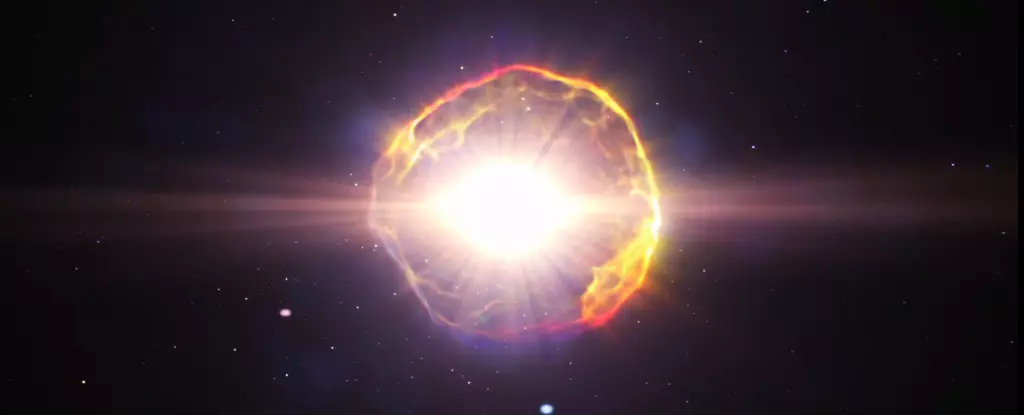One of the most intriguing events in the universe is about to take place – the eruption of a new star, T Coronae Borealis (T CrB). This celestial phenomenon is a unique opportunity for skywatchers to witness a rare event that occurs once every 80 years. Located in the constellation of the northern crown, T CrB is usually too faint to be seen, but when it erupts, it becomes a bright spectacle in the night sky, only to fade away after a few nights.
Stars like T CrB are powered by nuclear fusion reactions deep inside their cores, converting hydrogen into helium and generating energy to shine for billions of years. However, T CrB is now a white dwarf, a stellar remnant that has exhausted its nuclear fuel. It has a companion, a red giant that transfers gas to the white dwarf, forming an accretion disc. The gas accumulation results in a thermonuclear reaction, causing T CrB to shine 1,500 times brighter than usual. The expelled gas resets the cycle, readying the star for its next eruption.
T CrB belongs to a rare class of recurrent novae that erupt within a hundred years, allowing astronomers to predict their eruptions accurately. Only ten recurrent novae are known, with observations dating back to medieval times. The star’s last two eruptions in 1866 and 1946 displayed consistent features, signaling an impending outburst in 2023. The pre-eruption indicators, such as increased brightness and a dip in luminosity, serve as clues for astronomers to anticipate the event.
As T CrB approaches its eruption, skywatchers are encouraged to observe Corona Borealis in preparation for the appearance of the “new” star. The best viewing time is around 8:30 pm to 9 pm local time across Australia and Aotearoa, with the constellation reaching its highest point in the sky the farther north you are. The nova is expected to reach a brightness level comparable to the fourth brightest star in the Southern Cross, making it visible even from urban areas.
Amateur Astronomers’ Contribution
The monitoring of T CrB’s activity is not solely the domain of professional astronomers. Amateur stargazers play a crucial role in observing and reporting on celestial events, such as the eruption of novae. Organizations like the American Association of Variable Star Observers (AAVSO) collect data from amateur astronomers worldwide, aiding in the monitoring and understanding of stars like T CrB. Their dedication and expertise ensure that crucial observations are made and shared with the scientific community.
The upcoming eruption of T Coronae Borealis offers a rare glimpse into the life cycle of stars and the unpredictable yet fascinating nature of the universe. Skywatchers and astronomers alike are eagerly anticipating this event, ready to witness the fleeting but awe-inspiring appearance of a “new” star in the night sky. As we prepare for this celestial spectacle, let us marvel at the beauty and complexity of the cosmos, which never ceases to surprise and inspire us.



Leave a Reply